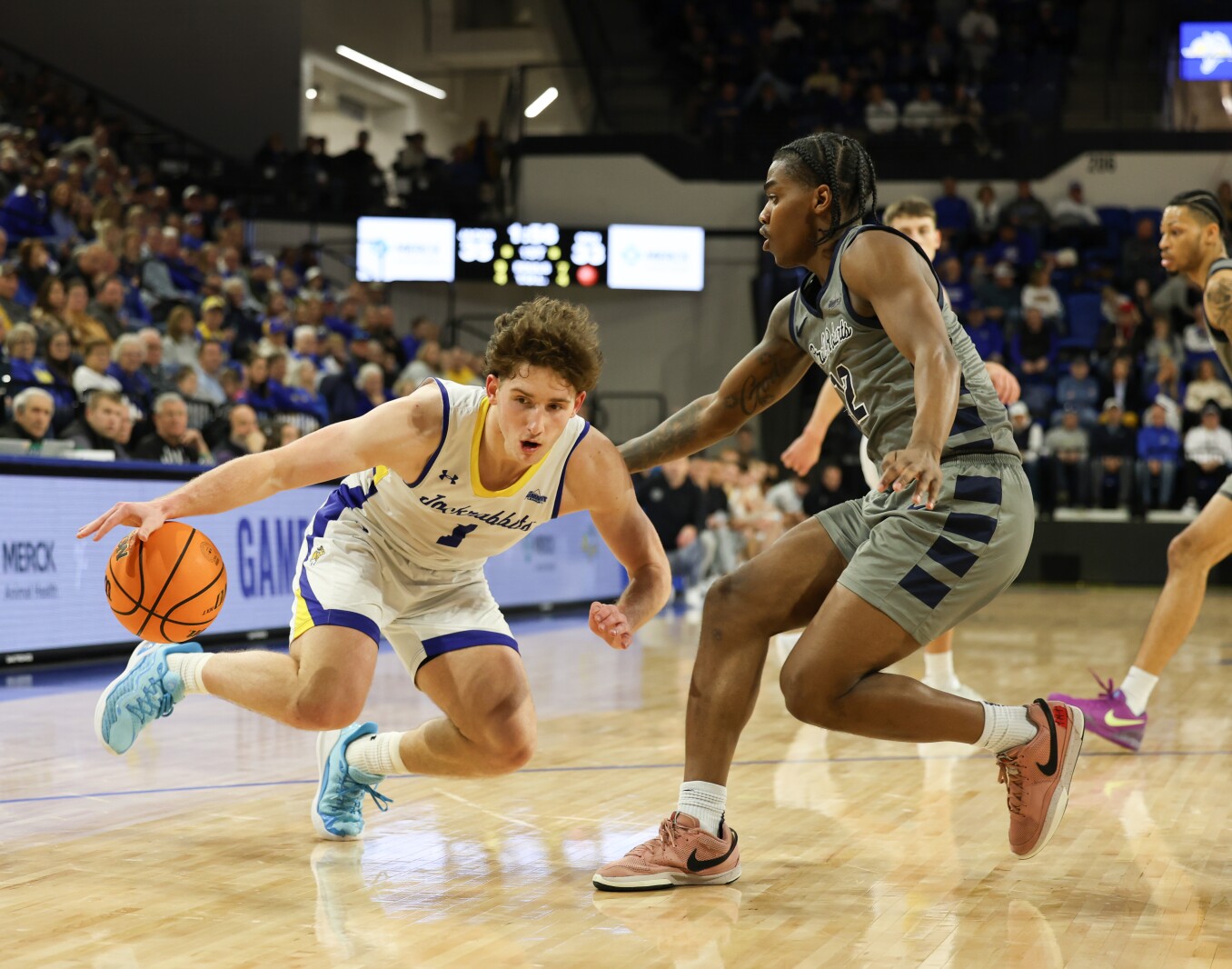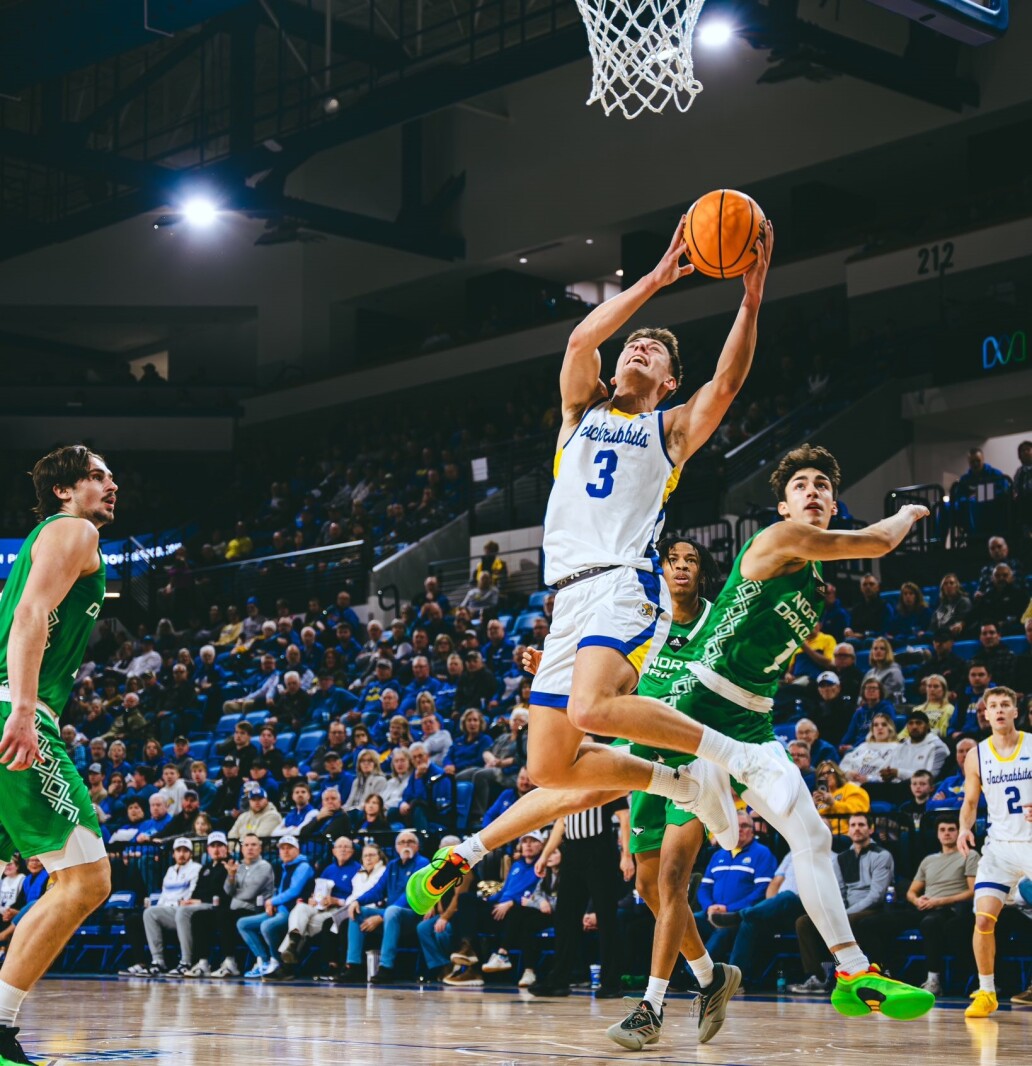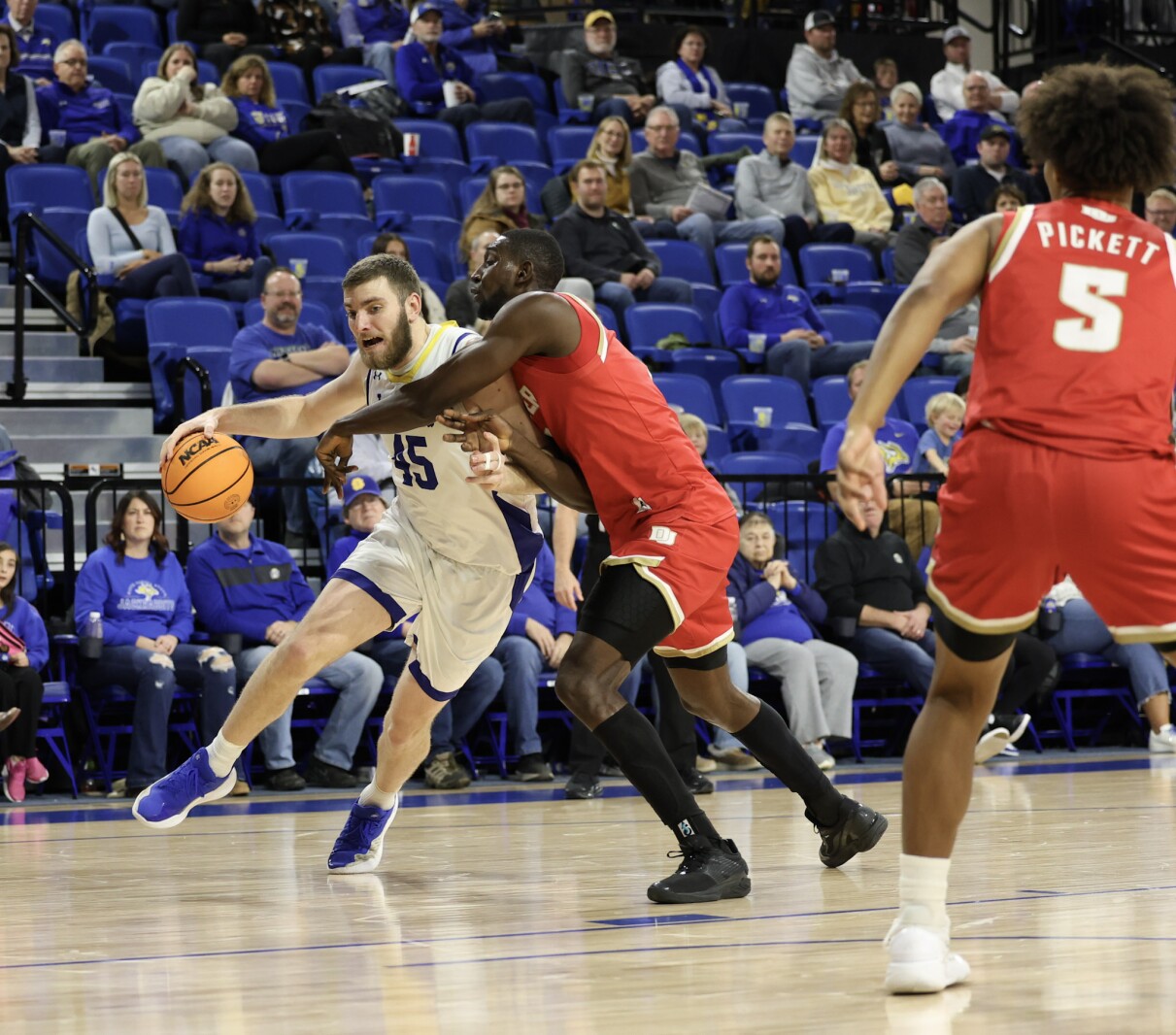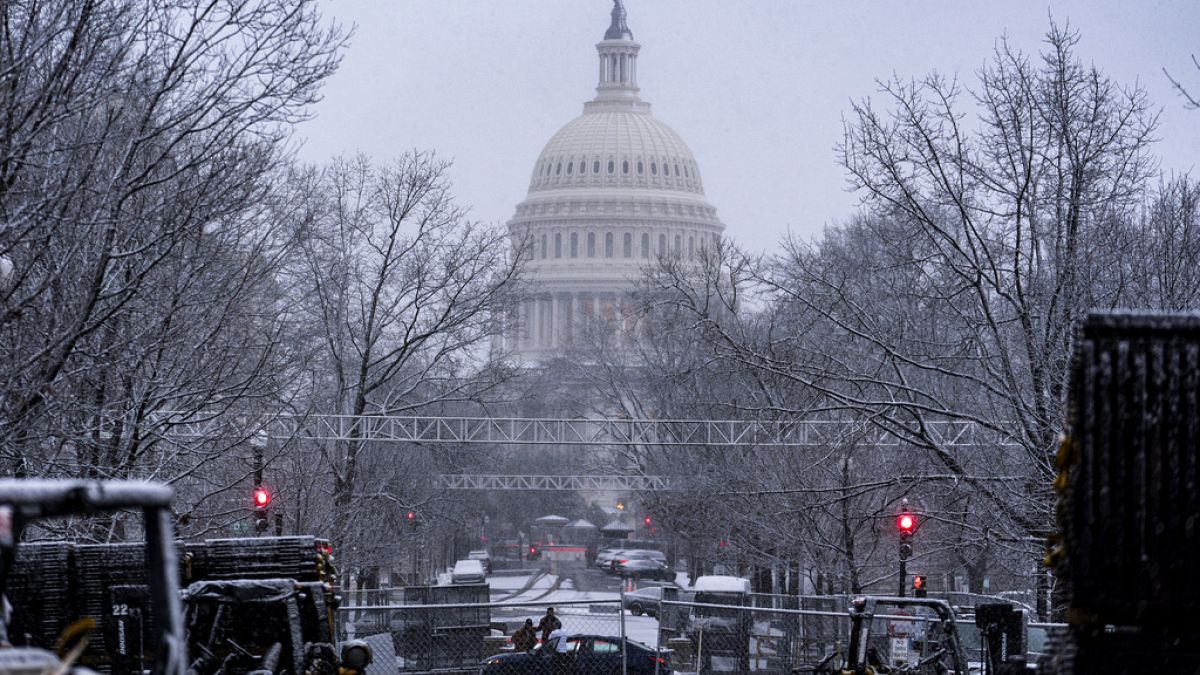North Dakota
Montana and South Dakota State's history in the FCS national championship

FRISCO — South Dakota State will be playing in the national championship game for the second consecutive year on Sunday, and the third time since the spring of 2021. Those are the only three times in the program’s 12 decade history that the Jackrabbits have played for a national championship.
Montana has played in seven FCS/I-AA title games, though this is their first trip to Frisco (the game moved there in 2010).
Here’s a look back at each team’s history of playing in the big game.
South Dakota State
2020/21: Sam Houston State 23, SDSU 21
The COVID-19 pandemic caused major disruption to college football in the fall of 2020. Some levels of football played games, others didn’t, some tried and failed and others wobbled their way through a haphazard seasons of stops and starts. The FCS postponed its season to the spring of 2021, and the Jackrabbits advanced to the championship game.
There, they took on Sam Houston State, but the Jacks lost freshman quarterback Mark Gronowski to an injury early in the game. Despite the best efforts of fellow freshman Isaiah Davis, the Jacks came up short, losing to the Bearkats 23-21 on a last-second touchdown pass.
USA TODAY Sports
2022: SDSU 45, NDSU 21
The Jacks came up one win short of a return trip to Frisco in 2021, falling to Montana State in the semifinals. But with Gronowski back in the fold for 2022, the Jacks had a historic season in store. They got off to a slow start but found their footing in time for conference play. They won their final 14 games of the season, capping off the first championship in program history with a 45-21 trouncing of rival North Dakota State in the championship game.
Montana
1995: Montana 22, Marshall 20
Andy Larson’s 25-yard field goal with 39 seconds to go lifted the Griz to their first title. Montana’s Dave Dickenson (281 yards, 2 TDs) outdueled Chad Pennington to help his team edge the Thundering Herd.
1996: Marshall 49, Montana 29
The rematch went to Marshall, thanks mostly to a wide receiver by the name of Randy Moss. The future Hall of Famer had nine catches for 220 yards — four for touchdowns — as the Herd rolled past the Griz.

NCAA photo
2000: Georgia Southern 27, Montana 25
GSU jumped out to a 20-3 lead only to see the Griz scored 20 unanswered points to take the lead.
But Adrian Peterson (the one who played for the Bears, not the Vikings) dashed 57 yards for the go-ahead touchdown early in the fourth quarter, and the Eagles held on.
2001: Montana 13, Furman 6
Joe Glenn’s Grizzlies were the No. 1 seed in the playoffs, with their only loss of the year coming to Hawaii. They were heavy favorites against 3rd-seeded Furman in the title tilt, and in a defensive struggle it was Montana’s that won the day. A 16-play, 99-yard drive by the Griz in the second quarter ended on Yohance Humphery’s 2-yard run, and that was the only touchdown of the game until Furman completed a Hail Mary for a score as time expired.

Forum file photo
2004: James Madison 31, Montana 21
The Griz scored twice in barely a minute to go from down 17-7 to up 21-17 midway through the third, but it was all Dukes from there. JMU scored a pair of touchdowns to take the lead and pull away, riding the legs of Maurice Fenner (29 carries, 164 yards) to the national championship.
2008: Richmond 24, Montana 7
The Spiders had rallied from a 4-3 start to their season to reach the championship game but were still big underdogs against the Griz. They dominated this one, however, taking a 21-0 lead at halftime and cruising to their first and only national championship.
2009: Villanova 23, Montana 21
The Grizzlies almost went one-and-done in these playoffs, needing a miraculous rally from down 27 points to South Dakota State in the first round to advance. From there they advanced to their second-straight title game, but again fell short.
Montana had a 14-3 lead after Jabin Sambrano’s 4-yard touchdown run midway through the second quarter, but the Griz couldn’t hold it. Villanova answered back with three straight touchdowns to take a 23-14 lead, using a punishing running game to grind down the Grizzlies. The Wildcats rushed for 351 yards as a team to just 60 for Montana, overcoming a big receiving day from SDSU nemesis and future Pro Bowler Marc Mariani.
Matt Zimmer is a Sioux Falls native and longtime sports writer. He graduated from Washington High School where he played football, legion baseball and developed his lifelong love of the Minnesota Twins and Vikings. After graduating from St. Cloud State University, he returned to Sioux Falls, and began a long career in amateur baseball and sports reporting. Email Matt at mzimmer@siouxfallslive.com.

North Dakota
North Dakota aerial applicators set an acreage record in 2024 while recording no fatalities

BISMARCK, N.D. — Aerial applicators in North Dakota treated 5.5 million acres in 2024 — setting a new record while recording no fatal incidents in the year among pilots.
“It’s really astounding when you think about 160 skilled pilots and what they’re able to do,” said Kyle Wanner, executive director of the North Dakota Aeronautics Commission. “When you go back to the ’80s, we had double the amount of aerial applicators, we had double the amount of pilots, and we had double the amount of aircraft. And so we’re doing much more today with less, and that’s due to the incredible work of these skilled aviators and the technology, the larger aircraft that they’re flying.”
The previous record was 5.2 million acres, set in 2015. The average acreage treated since 2001 has been 4 million acres. According to the National Agricultural Aviation Association, aerial applicators nationwide treat approximately 127 million acres of cropland, 5.1 million acres of forests, 7.9 million acres of pasture and rangeland and 4.8 million acres of public health spraying, including for mosquito abatement.
Jenny Schlecht / Agweek
Steve Iglehart, president of the North Dakota Agricultural Aviation Association, said bigger airplanes that can fly faster with more reliable turbine engines play a big role in allowing fewer pilots to cover more acres, as does GPS.
“GPS is a big, huge, huge for aviation,” said Iglehart, an aerial applicator who works in the Garrison area. “Airplanes are just faster and more productive now than they’ve ever been. I started off in the smaller airplane, 150 gallon hopper. You know, it works good for close in, 10 miles, 20 miles out. Then I get a 400 gallon hopper, one. Then you go out farther, 30 miles. Then a 500 gallon hopper — then you go out even a little bit farther and carry more. You can get more done in the shorter time.”
Treatments applied via airplane can include things like fungicides, herbicides and insecticides. Unique agronomic conditions also were involved in the record acreage in 2024.
“So we had a lot of moisture, wet ground in the eastern part. The rain came at the right time. Usually, if you get rain in June, you’re pretty much going to be guaranteed for a fungicide run somewhere,” he said.
Commodity prices were high enough in the spring that farmers saw the need to protect the crop. And if they aren’t using aerial application, farmers realize that they’ll have to apply from the ground. Saving the time on the farm staff, compaction from the sprayer and the wear and tear on the ground sprayer can mean that “sometimes the airplanes are flying for free,” Iglehart said.
“You know, they don’t have to hire somebody. They don’t have to find somebody to mix and load for them. That’s usually the aerial guy’s job. We can go farther. We can go cut across the field faster, get to a location faster than they can, if it’s safe. They got a field 30 miles away? We can get to it faster before a wind can come up. We’ve got the prime conditions to get something done at the right time,” he said.

Contributed / North Dakota Aeronautics Commission
After several
crashes
resulting in
fatalities
among aerial applicators in the region in 2023, a larger focus has been placed on safety. Iglehart said fatigue and the unique situations pilots encounter — like flying low and dealing with power lines — play a part.
“There’s days where you can get about 14 hours just running an airplane,” he said. “It’s a high-stakes game.”
He stressed the importance of pilots getting enough sleep, eating right and staying hydrated and positive as things that can help. But his association also took another step in 2024, putting on an eight-hour course on flying in wires and situational awareness. He credits the course for the clean 2024 flying season and said the association may make it a regular thing.
“I think that course paid dividends, for sure, in this last year,” he said. “It is expensive to have, but it’s cheap insurance when the return on investment is, nobody loses their life or has an accident. Everybody always needs to be reminded of things. Doesn’t matter how old or young you are. It’s just a good awareness thing to have.”

Contributed / North Dakota Aeronautics Commission
All aerial applicators must be licensed by the North Dakota Aeronautics Commission and must report their acreage to the commission by Dec. 1. North Dakota has 78 licensed manned aerial applicators, operating 183 aircraft with 156 pilots, and 21 unmanned aerial applicators, who operate drones in precision agriculture operations.
The unmanned aerial applicator portion is fairly new. The Aeronautics Commission has been licensing drone applicators who provide crop treatments since 2022. The 5.5 million acres treated in 2024 included 70,000 acres treated via unmanned aerial application. Wanner expects the number of unmanned operators to increase.
“The interest continues to grow,” he said. “We have 21 licensed unmanned operators. It might be up to 40 by the end of this year … based on the interest that we’re receiving.”
The North Dakota Legislature will consider during the 2025 session
House Bill 1037
, which would set up grant programs for use of autonomous systems, including drones, in multiple areas, including agriculture. The bill has been referred to the House Appropriations Committee and had not had a hearing scheduled as of Jan. 15.
Iglehart doesn’t know anyone operating a drone for crop treatments in his area, but he thinks they have their place in the industry.
“Where I like to see those things is probably under power lines and around corners,” he said.
He said they’re also useful for small plots where it wouldn’t make sense to “fire up the airplane.”
Wanner stressed that licensing is mandatory for applying crop treatments via drone.
“You can’t just go out there and mix the chemical and start flying that aircraft. There are a couple of things that we just need to ensure that you’re doing prior to that, but it is actually a relatively easy process once you really understand it, and we’re happy to walk through that with anybody,” Wanner said.

Jenny Schlecht / Agweek
The process includes getting a Remote Pilot Certificate from the Federal Aviation Administration, an Agricultural Aircraft Operator certificate from the FAA, a North Dakota Pesticide Certificate from North Dakota State University and an Unmanned Aerial Applicator License from the Aeronautics Commission.
Wanner said properly following those steps are critical in ensuring safety for operators and for the public, even if someone is just spot spraying on their own farm.
“Those are just some things that are critical, because at the end of the day, we want a professional environment. We want a professional environment for our aerial applicators, but also for our unmanned air applicators,” Wanner said.
Getting more pilots in the air
While more acres are getting covered with fewer pilots than in the past, the aerial applicator community still is looking for more young people interested in flying. Like farming, Wanner said it can be a difficult industry to get into, so discussions about how to get people interested and involved are ongoing.
“We want to obviously excite the next generation,” he said, noting that new technology and automation may be interest points for some. “You know, there’s different things like like that may come into play to make things easier moving forward.”
Iglehart said anyone interested in becoming an aerial applicator should contact a local applicator and visit with them about opportunities.
“Basically, they’re going to put you as a loader guy. Get learning and mixing and loading the airplane, get familiar with that. And then if they feel you can handle that well, then you can start applying for your private pilot license. Then you go into just flying a little bit, practicing the spray runs. And then if he feels like you can move on to the next step, he’ll put you in an airplane that you can track your GPS and just learn the basics and be safe,” he said.
North Dakota
NDGF talks hunter safety courses as classes begin around the state

BISMARCK, N.D. (KFYR) – Most of North Dakota’s hunter education courses taught by volunteer instructors happen between January and the beginning of June. Anyone born after Dec. 31, 1961, is required by law to complete a state-certified course if they plan to hunt in North Dakota.
“If you’re going to need hunter ed before this next fall, it’s really important right now to go to our website and get signed up for our text alerts and start looking for a class in your area. A lot of our smaller communities, there’s only 1 or 2 courses a year. In some of our larger communities, those first few classes every year fill up pretty quick in places like Fargo, Bismarck, Grand Forks,” said Brian Schaffer, Hunter Education Coordinator.
There are a couple of options for completing a certified hunter education course in North Dakota.
“The first one is a traditional course that the majority of people who have ever completed a hunter in the state is 14 hours of in-person instruction, with our volunteer instructors going over firearm handling, wildlife conservation, all of those things. And then we also, in recent years, have really developed what we call our home study course, which is a hybrid between in-person learning and online learning. And it’s really gained popularity with kids’ busy schedules and the way kids learn these days,” said Schaffer.
There is a minimum age a student must be to enroll in a course in North Dakota.
“So sign up for a hunter education course in North Dakota, for the traditional course, it’s the calendar year in which a youngster turns 11. And for our home study course, it’s the calendar year in which they turn 12,” said Schaffer.
The demand statewide is still there for hunter education courses, which is why the recruitment of volunteers to teach in rural and larger cities remains vital.
“So there’s many of our volunteers across the state that have been teaching hunter education since the program’s inception in 1979. And it’s a testament to all those volunteer hours and dedication to the program that we were able to hit that 250,000-student certification this past year,” said Schaffer.
If you’re interested in becoming a hunter education volunteer instructor, call the Game and Fish Department at 701-328-6300.
For more information on hunter education courses in North Dakota, visit gf.nd.gov.
Copyright 2025 KFYR. All rights reserved.
North Dakota
Rock stars: Bottineau geology students propose new North Dakota symbol • North Dakota Monitor

North Dakota could be getting its first-ever state rock: a cola-colored stone called Knife River Flint.
The idea came from a group of young geology enthusiasts from Bottineau Public Schools, who discovered last year that North Dakota is one of two states lacking an official rock.
Members of the so-called Bottineau Rockhounds club traveled to the Capitol last week to tell lawmakers why they should approve House Bill 1186 and give Knife River Flint that title.
The rock is only found in North Dakota, for one. Because it’s easy to shape, it has been mined by Native cultures for thousands of years.
“Knife River Flint is a smooth, durable rock that is made of very small crystals which makes it easy to chip in various forms and turn into useful tools,” fifth grader Grace Motl told members of the House Political Subdivisions Committee on Thursday.
It was traded widely and has been found in archaeological sites across the continent, according to the Rockhounds.
“It has been an important stone for trading by many different cultures throughout North Dakota’s history,” Avery Kitzman, a sixth grader, said.
Knife River Flint prevailed among four other suggestions proposed by the Rockhounds, said fifth grade teacher and club adviser David Cauley. Those included chalcedony, aventurine, moss agate and prairie agate.
They held an election to determine the winner.
“Since this last year was a big election year, we decided that it would be a really fun idea to have our own election that could teach students how elections work,” Cauley told lawmakers.
Cauley’s wife, Michelle — an instructor at Dakota College and another adviser to the Bottineau Rockhounds — said the college, three local high schools and Rockhounds clubs in Bismarck and Grand Forks participated in the contest, too.

The Bottineau Rockhounds even made campaign posters to hang up in the hallway.
“The school was just abuzz for the two or three weeks before the election,” Cauley said.
In all, 541 votes were cast. Knife River Flint emerged the victor with 56% approval.
Rep. Dan Vollmer, whose district includes Bottineau, is sponsoring the bill. Vollmer and Rep. Macy Bolinske, who carried the bill on behalf of the House Political Subdivisions Committee, brought samples of Knife River Flint to the House floor on Friday to show their peers.
The House voted unanimously to forward the bill. It’ll also need approval from the Senate.
YOU MAKE OUR WORK POSSIBLE.
GET THE MORNING HEADLINES.
-

 Science1 week ago
Science1 week agoMetro will offer free rides in L.A. through Sunday due to fires
-
/cdn.vox-cdn.com/uploads/chorus_asset/file/23935558/acastro_STK103__01.jpg)
/cdn.vox-cdn.com/uploads/chorus_asset/file/23935558/acastro_STK103__01.jpg) Technology1 week ago
Technology1 week agoAmazon Prime will shut down its clothing try-on program
-
/cdn.vox-cdn.com/uploads/chorus_asset/file/25826211/lorealcellbioprint.jpg)
/cdn.vox-cdn.com/uploads/chorus_asset/file/25826211/lorealcellbioprint.jpg) Technology1 week ago
Technology1 week agoL’Oréal’s new skincare gadget told me I should try retinol
-
/cdn.vox-cdn.com/uploads/chorus_asset/file/25832751/2192581677.jpg)
/cdn.vox-cdn.com/uploads/chorus_asset/file/25832751/2192581677.jpg) Technology5 days ago
Technology5 days agoSuper Bowl LIX will stream for free on Tubi
-

 Business6 days ago
Business6 days agoWhy TikTok Users Are Downloading ‘Red Note,’ the Chinese App
-
/cdn.vox-cdn.com/uploads/chorus_asset/file/25835602/Switch_DonkeyKongCountryReturnsHD_scrn_19.png)
/cdn.vox-cdn.com/uploads/chorus_asset/file/25835602/Switch_DonkeyKongCountryReturnsHD_scrn_19.png) Technology3 days ago
Technology3 days agoNintendo omits original Donkey Kong Country Returns team from the remaster’s credits
-

 Culture2 days ago
Culture2 days agoAmerican men can’t win Olympic cross-country skiing medals — or can they?
-
/cdn.vox-cdn.com/uploads/chorus_asset/file/24774110/STK156_Instagram_threads_1.jpg)
/cdn.vox-cdn.com/uploads/chorus_asset/file/24774110/STK156_Instagram_threads_1.jpg) Technology7 days ago
Technology7 days agoMeta is already working on Community Notes for Threads




















